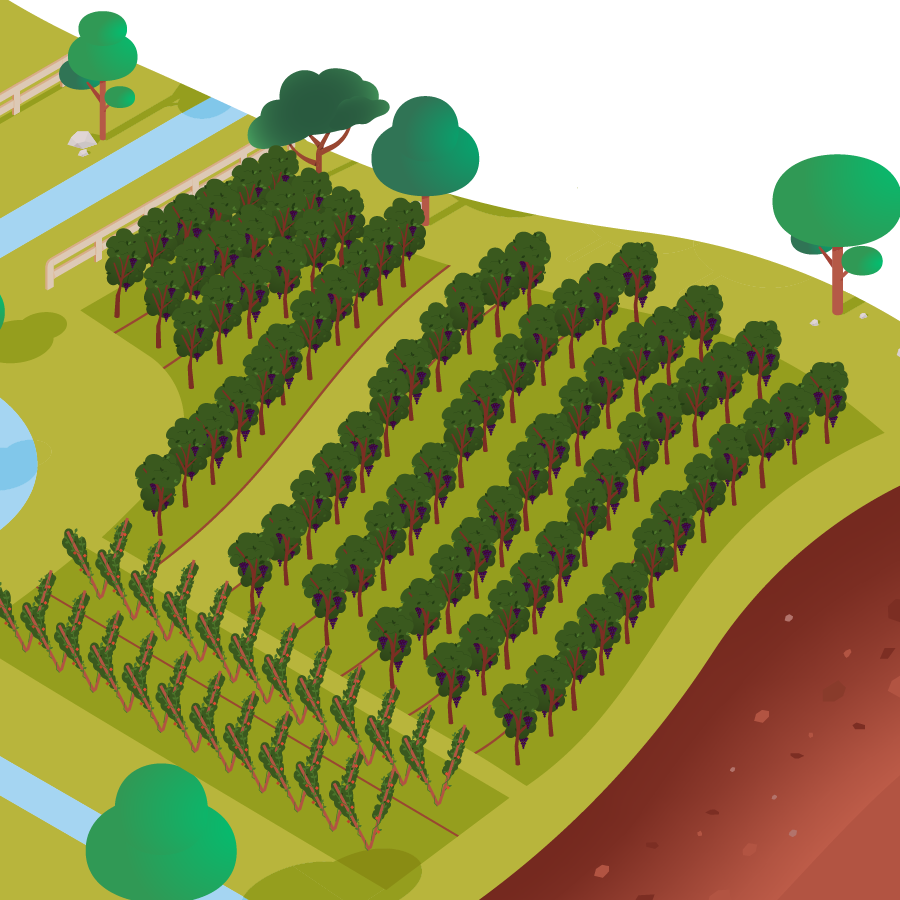
Aspect and Slope
The direction in which sloping land faces, and the angle at
which land inclines.
Aspect is important to consider when designing a regenerative farm. For example, land that faces the hot westerly sun, and is angled in such a way that the sun’s rays hit hardest every hot summer afternoon, is more likely to bake dry and hard than land which faces a southerly aspect.
Farmers take aspect into account when making assumptions about how much exposure to sun and wind the land is likely to receive. The aspect of land can affect what they decide to grow. For example, soils on lower slopes or valley floors are usually deeper than soils on upper slopes which can be thinner.
Sloping land can be prone to erosion and gullying, it can be difficult to access, and may be at risk of bushfire racing up the slope. Slope can also be an advantage, allowing water to drain, or cold air to move downhill. This is why the rows of vines in vineyards, for example, run up and down the slope, not across it.
Design decisions regenerative farmers consider include:
- using slope to direct water by gravity, such as by placing dams high on a slope
- managing livestock grazing so that pasture grasses have deeper root systems that knit the soil together and prevent erosion.
- working on-contour (across the slope) to return organic matter and water to the soil
- siting crops that prefer good drainage (such as vineyards) on sloping land.
 Peninsula Vinecare
Peninsula Vinecare